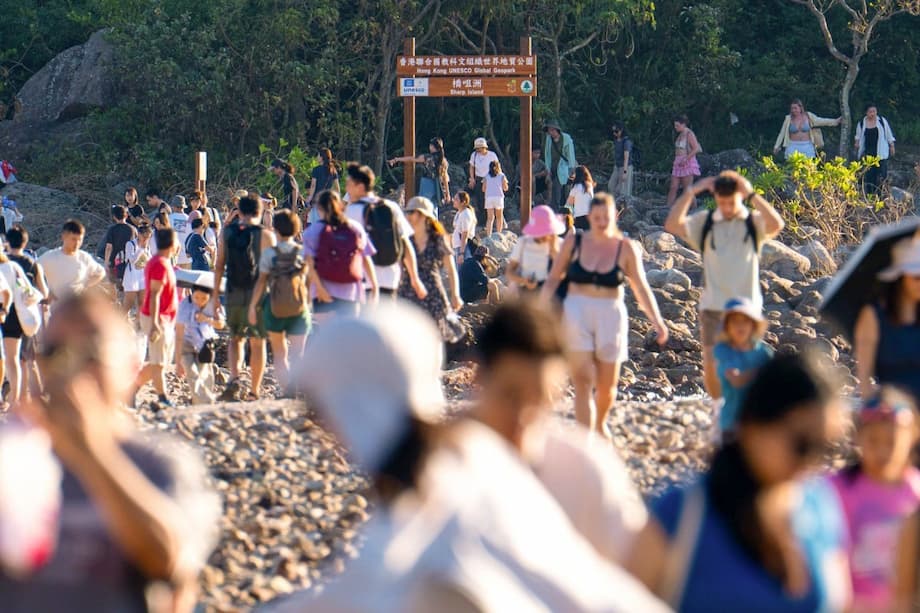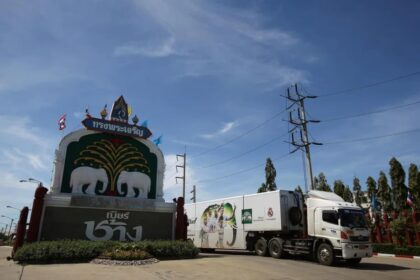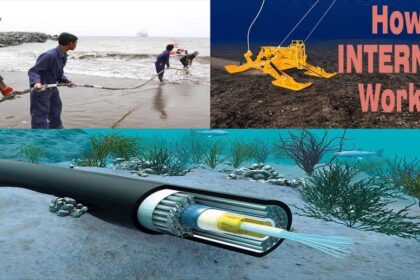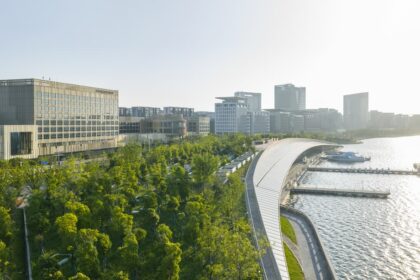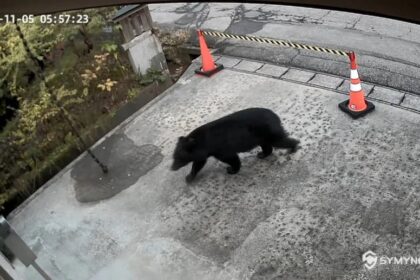Why a holiday surge sparked a coral debate
During the National Day Golden Week holiday, more than 4,000 people crowded onto Sharp Island in Sai Kung, a volcanic jewel within the Hong Kong UNESCO Global Geopark. Images of sun seekers wading across the famous tombolo, snorkellers standing on shallow reef flats, and boats edging close to coral zones raced across social media. The scenes revived a familiar tension in Hong Kong: an open, affordable day trip that brings welcome joy and business, and a fragile nearshore ecosystem that cannot handle careless behavior.
- Why a holiday surge sparked a coral debate
- What officials say and how they plan to respond
- What environmental groups and locals report
- How fragile are Sharp Island reefs
- Managing crowds without closing the door
- What the data says about island tourism and conservation
- What visitors can do right now
- Key Points
City leaders sought to calm immediate fears. The Secretary for Environment and Ecology, Tse Chin-wan, said early indications did not show widespread harm to coral off Sharp Island after the holiday rush. The Agriculture, Fisheries and Conservation Department said it would move quickly to inspect the site and review controls at busy nature destinations. Officials stressed that the main coral zone lies a fair distance from the most crowded beach, which lowers the chance that casual beachgoers would crush living coral with their feet.
Green groups and local councillors pointed to a different risk profile. They documented littering, illegal fires for cooking, people digging up starfish and sea urchins, and snorkellers walking on coral heads while feeding fish. A crowd of more than 4,000 on a single day pushed past what many conservationists consider the safe capacity for such a small, sensitive island. Their argument is blunt: without clearer rules and better management, the next holiday surge will bring more cumulative damage than the reef can recover from.
What officials say and how they plan to respond
Tse Chin-wan said the government treats the reports with urgency. He said enforcement will be strengthened at popular coastal spots during holidays, while AFCD teams step up monitoring of key reef sites near Sharp Island. Inspectors plan underwater surveys to check coral health, including signs of recent breakage, abrasion, sediment kicks, and bleaching. AFCD says it routinely photographs the reef to track unusual changes after spikes in visitation.
Authorities also signaled a review of visitor management at geopark gateways and ferry points after the holiday crush. Options under discussion include clearer capacity alerts, temporary barriers to protect reef flats during low tide, and joint patrols by marine police and AFCD on peak days.
Patrick Lai Chuen-chi, the AFCD deputy director, described the inspection plan and the department’s initial view of risk. He also said officials are open to visitor management tools, including limits in sensitive areas, if evidence shows they are needed to protect the reef while still allowing public access.
In discussing the immediate steps, Lai set out the timeline and stressed distance between the beach and the denser coral areas offshore.
Patrick Lai Chuen-chi, deputy director of AFCD, said: “We will arrange for our officers to go underwater and monitor the coral zone as soon as possible to assess the situation.” He added: “There is quite a bit of distance between the coral zone and the beach on Sharp Island, so the impact on the coral zone is unlikely to be significant.”
What environmental groups and locals report
Greenpeace counted 4,062 visitors on Sharp Island on October 1. Volunteers recorded boats anchoring inside protected coral zones, crowds digging up coastal organisms, and people standing on living coral to adjust masks or feed fish. They warned that such contact can leave fractures and abrasions that take years for slow growing coral to repair. They also flagged a risk that fish feeding concentrates activity in shallow water, increases disease transfer between fish, and encourages snorkellers to cluster where they can stand, which increases trampling.
Volunteers also reported snorkellers using coral heads as handholds to stand upright for selfies, a behavior that concentrates force on delicate growth tips. On busy days, that pattern can repeat thousands of times across a small area.
Local district councillor Christine Fong Kwok-shan urged targeted education at the pier and along ferry routes to Sharp Island. She said extra signboards inside the geopark can clutter the scenery and may not change behavior at the moment when it matters most, which is before people step onto the beach or into the water.
Greenpeace wants a formal policy framework for ecotourism in Sai Kung that begins with a carrying capacity study, sets limits in sensitive zones, and gives officers the tools to prevent overcrowding on the busiest days. The group argues that stronger enforcement at a few sites is not enough during holiday peaks, when multiple bays and islands receive heavy traffic.
Ha Shun-kuen, a project manager with Greenpeace, said more visitors will come as the city upgrades nature tourism facilities, and the rules need to keep pace with that growth.
Ha Shun-kuen said: “Only with comprehensive policy measures can we truly conserve the ecologically valuable geopark.”
How fragile are Sharp Island reefs
Sharp Island, also known as Kiu Tsui Chau, sits inside one of Hong Kong’s richest coral regions. Surveys show large areas of stony coral around the island, with reef flats in the shallows and more complex coral gardens farther offshore. These habitats shelter juvenile fish, crabs, urchins, sea cucumbers and many invertebrates that stitch the food web together. Healthy reefs also help blunt waves and reduce erosion along nearby shores. For a day trip destination so close to the city, this is a rare and valuable asset.
Coral is alive. It is not rock. The hard skeleton comes from tiny coral polyps that grow slowly, millimeter by millimeter. A single footstep can crush decades of growth. When people stand on a coral head to take a photo or adjust a mask, fragile branches snap and tissue tears. Broken tips are entry points for disease. Shifting sand kicked up by fins smothers nearby corals and blocks light. Recovery is slow, which is why repeated trampling during holiday peaks can leave lasting scars. Warmer seas and bleaching events also stress Hong Kong corals in some years, and physical contact on a stressed colony can tip it past a point where it can survive.
Anchors are another concern. A small boat dropping a hook onto a reef can shatter coral and scrape a path as the boat swings with wind and tide. Even careful captains need clear mooring options in areas with dense coral. On busy days, the accumulation of small harms adds up, from sunscreen and soap in the shallows to litter that entangles fish and sea turtles.
The island sits inside a UNESCO Global Geopark, a designation that promotes conservation, education and sustainable development. The goal is not to fence people out. It is to guide access in a way that protects geology and ecology while supporting learning and local livelihoods.
Common stressors linked to tourism
- Standing or walking on coral breaks and crushes living structures.
- Anchors and chains drag across reef tops and seagrass, leaving scars.
- Collecting starfish, urchins, shells and coral disrupts the food web and breeding cycles.
- Fish feeding changes behavior, spreads disease, and attracts crowds into shallow reef zones.
- Litter and plastic degrade water quality and injure marine life.
- Fires and poor waste handling pollute beaches and nearshore waters.
Diving research in Hong Kong and across Asia shows a pattern. Untrained or inexperienced visitors cause the most contact with coral, especially in shallow, popular sites. Education and guide presence reduce these contacts. Reef safe sunscreen, improved mooring, and clear no contact rules further reduce harm. Where these steps are consistent and visible, reef health improves and visitor experience improves with it.
Managing crowds without closing the door
Hong Kong wants people to enjoy the geopark. It also wants living reefs to be healthier five years from now, not more damaged. That balance calls for a set of practical tools that scale up during holiday peaks and ease off during quiet periods. Many of these steps are already in use in other reef destinations and can be adapted to the Sai Kung coastline.
Visitor limits and timed access
Carrying capacity studies can set safe thresholds for beaches, tombolo crossings and snorkel areas. Once thresholds are known, the city can test day specific quotas on the busiest holidays, with timed ferry slots and real time capacity updates at the pier and online. Permits can reserve small windows for school groups and guided reef tours, which spreads use across the day and reduces crowding in the shallows.
Protecting the reef in the water
Clear, enforced no anchor zones around coral heads are essential. Fixed mooring buoys near popular snorkel spots give boat operators a safe alternative. Roped swim lines and simple reef boundary markers keep most visitors over sand rather than coral. In shallow entry areas, marked paths to deeper water reduce contact with fragile reef flats. Tour operators can brief guests on no contact snorkelling and offer flotation aids that keep feet off the bottom. A training and compliance program for snorkel and dive operators, used effectively in parts of Southeast Asia, can cut contact rates at high use sites.
Education and enforcement that work together
Education needs to start before the trip. Leaflets at Sai Kung Pier, simple videos in ferry queues, and booking pages that include a code of conduct can shift behavior before people arrive. On the island, fewer but clearer signs at key entry points can reinforce the message. Patrols should prioritise peak hours, with officers visible at high risk locations. A small number of well publicised warnings and fines for littering, fires, collecting organisms, and anchoring in coral zones will change behavior quickly. The government can also pilot community cleanups and citizen science transects that help monitor coral and engage frequent visitors.
What the data says about island tourism and conservation
Research on island destinations shows a consistent pattern. Residents, visitors, business owners and government officials want nature tourism to succeed, but they worry about pollution, habitat loss and stress on wildlife. They also see benefits when tourism funds conservation work and improves public awareness. Studies recommend active participation by all groups, regular monitoring that captures real conditions, and management that adjusts as conditions change.
For Sharp Island, that means pairing public access with clear limits where the reef is most vulnerable, then checking the reef on a schedule that matches visitor pressure. It also means building simple indicators that show whether actions are working, such as coral cover in snorkel zones, the number of anchor scars, and the rate of contact incidents observed by patrols and guides. Photo transects, fixed point cameras, and a log of mooring buoy use are low cost tools that help track progress across seasons.
What visitors can do right now
- Do not step on coral or stand on rocks covered in living organisms.
- Keep fins and feet off the bottom. If you need to rest, float on the surface.
- Never touch or collect marine life, including starfish, urchins, shells and coral.
- Do not feed fish. It changes behavior and increases disease risk.
- Use a boat mooring, not an anchor, near any coral zone.
- Pack out all trash. Leave the beach and trails cleaner than you found them.
- Skip fires and cooking on the beach. Use designated facilities only.
- Use reef safe sunscreen or wear a long sleeve rash guard to reduce chemicals in the water.
- Follow AFCD signs and instructions from wardens and lifeguards.
- Share the message. If you see risky behavior, give a friendly reminder.
Key Points
- Officials say early checks suggest limited reef damage at Sharp Island after Golden Week, but they will conduct underwater surveys and increase patrols.
- More than 4,000 people visited the island on October 1, with reports of trampling, littering, illegal fires, fish feeding, and boats anchoring near coral.
- AFCD says the main coral zone is some distance from the beach, which may reduce direct harm from casual beach use.
- Greenpeace urges a formal ecotourism policy, a carrying capacity study, and limits in sensitive areas to prevent overcrowding.
- Coral grows slowly and is easily broken by feet, anchors and sediment. Recovery takes years.
- Practical steps include no anchor zones, fixed moorings, snorkel boundary markers, visitor quotas on peak days, and education before the trip.
- Research on island tourism supports adaptive management, strong participation by stakeholders, and clear indicators to track reef health.
- Visitors can help now by avoiding contact with coral, not feeding fish, packing out trash, and following AFCD guidance.


